I have arrived back in Berlin and my trip to Mongolia was more productive than I ever imagined it could be. I am now preparing for my Einstein Forum lecture in Potsdam on Wednesday, June 20th at 7pm. I will talk about my Mixed Signals book project and focus on my research on Mongolian white phone workers.
Just before I left Ulaanbaatar, I met with an artist and curator, Ochir, who invited me to participate from afar in an international art exhibition later this month in Ulaanbaatar called Intersections 3. We had met and discussed this research a few years ago and he told me he really wanted to include this installation in his upcoming show. So now I am scrambling and coordinating with people in Ulaanbaatar to do an installation piece on June 26th about the white phone workers and I am providing a draft description of the installation concept below.
White Phone Workers Installation
As wireless telephony industry boomed around the world throughout the late 1990s and early 2000s an innovative practice of public wireless telephony emerged in Ulaaanbaatar. In 2001 Mobicom and Mongol Telecom began selling CDMA wireless phones to families who were out of range of landline service. Some of these customers began developing their own business enterprises by selling time on their phones to other citizens and charging 100 tg per minute, twice as much as their own per minute fee. Now there are 15,000-17,000 white phone workers on the streets of Ulaanbaatar selling wireless phone calls to passersby. They work day and night, summer and winter and some earn supplemental income by selling cigarettes, gum and coffee as well.
The “White Phone Workers” installation is designed to draw attention to this new labor force within the telecom sector. Many of these workers migrated to Ulaanbaatar after the economic collapse of the 1990s and have used this as transitional work as their careers and livelihoods have shifted with the change from a communist to a capitalist economic system. The installation is comprised of four white phone workers, situated in a circle, all of whom have unique life stories. Visitors are invited to place phone calls and ask the workers questions about their jobs and lives. Visitors can also view some of Parks’ photographs online at www.flickr.com/photos/cosmowink/sets/72157600378397472/.
The installation is designed to encourage visitors to consider the transitional and flexible labor practices that have emerged with the development of new telecom and information technologies in Mongolia. Some white phone workers were previously employed as herders in the countryside, tractor operators, construction workers, teachers, or café owners, among other careers. Now they work an average of 8-10 hours a day sitting on the street, often wearing surgical masks to protect themselves from pollution and communicable diseases, and their income is based upon fluctuating traffic flows and demand for wireless phone access. As more and more Mongolians are able to purchase their own wireless phones, it is possible that white phone work may disappear, and many of these workers will be displaced yet again.
This installation is based upon research conducted in Ulaanbaatar in 2004 and 2007, and is related to a book in progress entitled Mixed Signals: Media Technologies and Cultural Geographies being written while Parks is a research fellow at the Wissenschaftskolleg (Institute for Advanced Study) of Berlin in 2006/2007.
Monday, June 18, 2007
Subscribe to:
Post Comments (Atom)

Around the Antenna Tree: The Politics of Infrastructural Visibility
New Book

This book has just been published. An expanded version of my essay "Obscure Objects of Media Studies" is in it

Goodbye Rabbit Ears: Thoughts about the Digital TV Transition
Transmediale Opening - Roaming


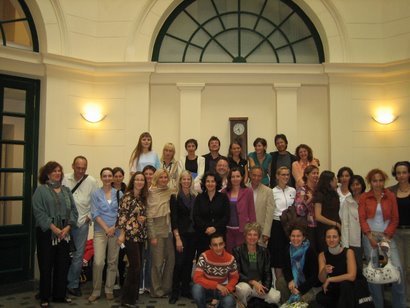
Participants in CEU Seminar
Naran Satellite Station, Mongolia
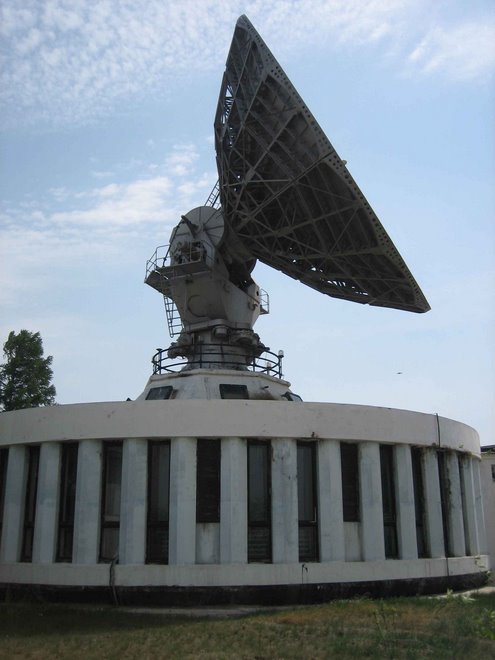
Intersputnik dish

Former herder now a white phone worker
Inside Choijin Lama Temple
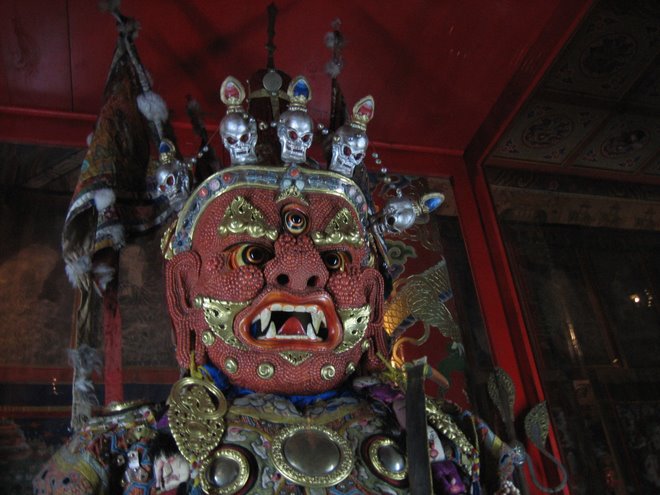
Naran's Grandma and the rug she made
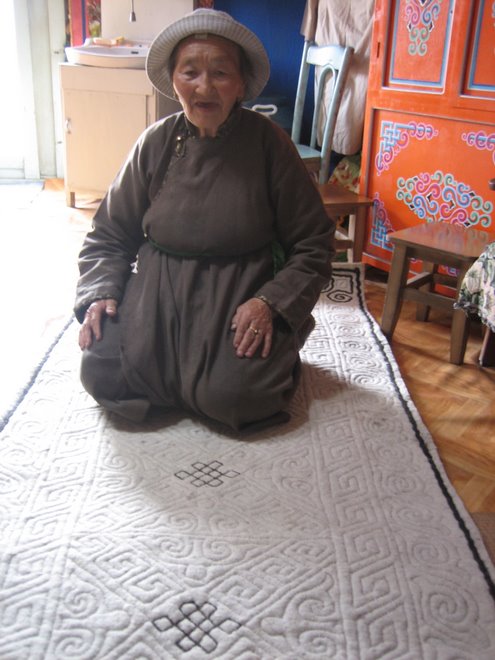
Satellite Dishes and Solar Panels for Sale at Black Market in Ulaanbatar
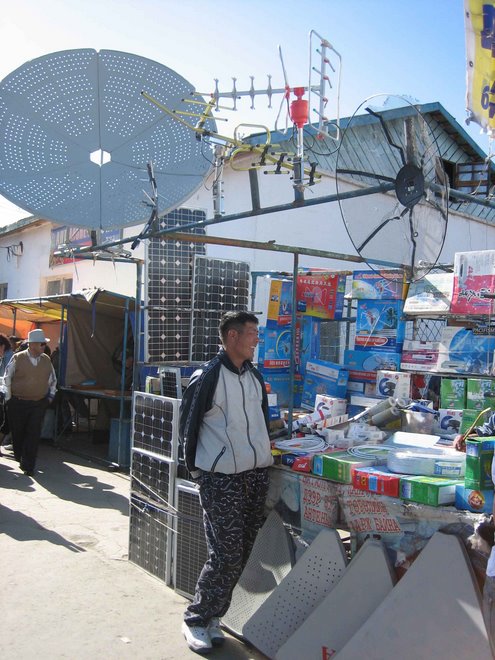

Ponjee and his Nokia phone

walking phone = yavdag utas

Wireless Phone Workers
Wireless Phone Worker
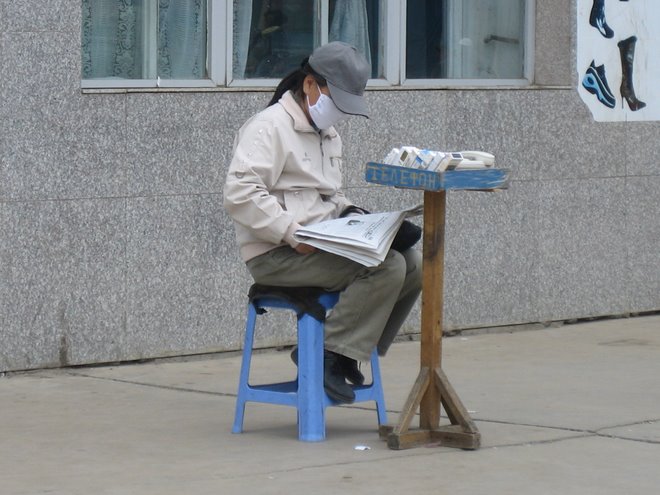

Satellite Dish and Tool Seller at Black Market




1 comment:
lisa,
great to hear what you're up to (and happy birthday)!!
one thing i found interesting are the white masks over the phone workers' faces: while you now call them surgical masks and not gas masks, your original connection seems especially appropriate given the problem with air quality there. after all, the workers both utilize and protect themselves from the same natural resources. wondering what meaning these masks have for them/others?
just some thoughts :)
nicole
Post a Comment